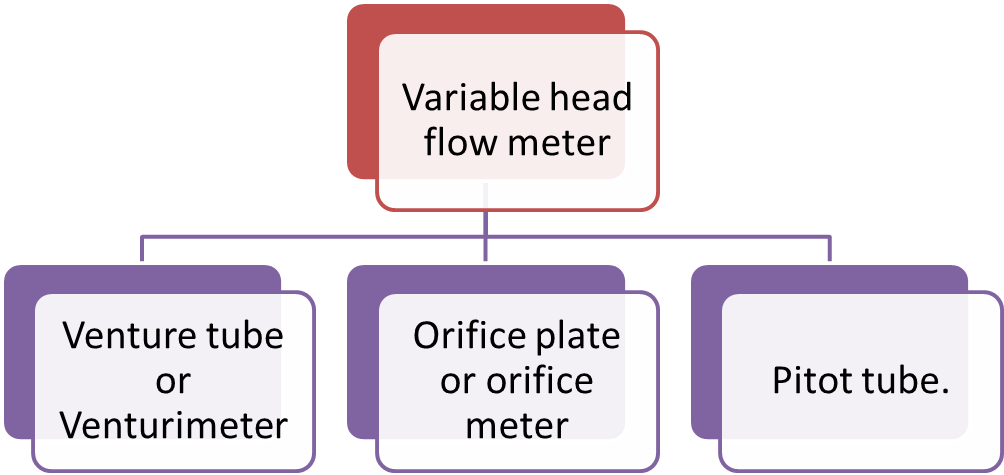Variable head meters operate on the principle that, “if a restriction element (obstruction) such as orifice plate or venturi-tube or elbow in the pipe of flowing fluid is introduced, then it produces a pressure difference across the restriction element used. ” This pressure difference is proportional to the flow rate. Therefore, such flow meters are called as restriction type flow meters, which results in acceleration of fluid causing change (decrease) in pressure. In other words, pressure drops, because, some pressure energy of fluid is converted into kinetic energy, which increases velocity of fluid in downstream side. This magnitude of pressure drop or change in pressure can be measured. Since flow is directly proportional to change in pressure, therefore, we say that, pressure difference can be used as function of flow to find its value.
Mathematically, Flow,
\[\text{Flow}\propto \sqrt{\text{ }\!\!\delta\!\!\text{ P}}\]
Change in pressure before and after the obstruction (i.e pressure difference between upstream side and downstream Side) is measured by a U-tube differential manometer.
Advantages of Variable Head Meters
- Low cost.
- It has wide range of application.
- Accuracy up to 2
- It can be adopted for any size of pipe and any flow rate.
- It can be easily removed without shutting down the process.
Disadvantages of Variable Head Meters
- Difficult to measure flow rate of slurry.
- High permanent pressure loss.
- It does not have linear characteristics.
- Low flow rate is not easily measured.
Difference between Variable Head Type Flow Meter and Variable Area Type Flow Meter with Constant Head
Variable Head Meters
- In case of variable head meters, pressure difference is used to measure flow rate. In these meters, cross-sectional area is reduced at the point of measurement.
- In case of variable head flow meters, the pressure difference across the two sections is the measure of flow rate.
- In such cases, the flow restriction is of fixed size and the pressure difference across the two section changes with flow rate.
- For example: Venturimeter, Orifice plate, Flow nozzle, Pitot tube.
Variable Area Meters (Constant Head)
- Working of variable area meter is exactly reverse of variable head meters. In variable area meter, the differential pressure between top face and bottom face of float is maintained constant, and variation in cross-sectional area of the flow is measure of flow rate.
- Here, the size of restriction is adjusted by an amount, which is proportional to flow rate.
- Such types of flow meters are called as constant head and variable area type flow meters.
- If differential pressure head is maintained constant by adjusting out flow area A2 of a construction meter, then, the outflow area at any instant would be a measure of flow rate through the device.
- For example: Rotameter
VARIABLE HEAD TYPE FLOW METERS
Following are the different types of variable head type flow meters.

- Venture tube or Venturimeter,
- Orifice plate or orifice meter,
- Pitot tube.